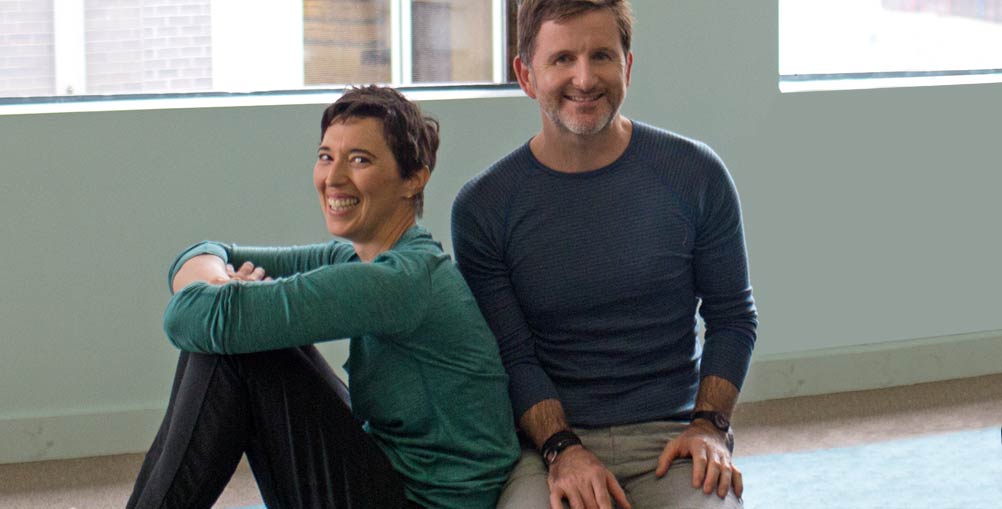In part one of our two-part Fascia and Wellness series, the basics of fascia were explored, uncovering misconceptions around the ways in which we understand our bodies’ composition.
Fascia, or the mucousy, web-like network connecting our muscles, bones, nerves, tendons, and more, plays a much larger role than we previously thought, acting as a critical component in our healthy functioning body systems.
Now, because you’re up to speed on the incredible role of fascia, you’re probably wondering how exactly you can improve its health, reversing the impact of years of damage and strain.
On the Genius of Wellness podcast, founders of Bendable Body, Sita Hagenberg and John Kelly discussed their revolutionary approach to stretching that addresses the fascia directly.
They describe healthy fascia as the root of unrestricted movement and wellness at the cellular level. But, because our modern lifestyles involve too much sitting and too many repetitive and damaging movements, we inevitably encourage the drying out and stiffening of our web-like connecting membrane. And the implications can be persistent aches and pains, limited flexibility, and poorly functioning mechanical and energetic systems.
Sita explains, “People have the conception that muscles just get stiff independently of other tissues . . . But what’s really happening is that every individual muscle fiber, not just the entire muscle, is poured into essentially a fascia pocket. And that fascia, like a 3D membrane-web- tissue throughout the whole body, gets stiff and dry when you don’t make proper movements or when you have an injury.”
Which is where the Bendable Body method comes in. Through Resistance Flexibility and Strength Training, fascia is targeted directly, encouraging entire groups of muscles, tissues, ligaments, and tendons, to stretch together.
The Bendable Body Method
Sita and John explain the Bendable Body Method, starting “with a muscle in its shortest position, contracting it (resisting) to engage the surrounding fascia, and then lengthening it to get a deep stretch.”
To further understand this concept, they offered a sample stretch you can do from a seated position, targeting stiffness in the back of the shoulders.
They describe: begin by bringing your palms together just above your forehead while keeping your elbows wide. Then, start creating resistance by contracting your muscles, pressing your hands together.
The pressure should create tightness in your arms and shoulders. Continuing with the resistance, begin lengthening your muscles, drawing your elbows together, and lifting your hands to stretch the muscles in your upper back.
Finally, let the tension go, and bring your hands and arms back to their starting position. Repeat this motion five more times to engage the fascia, releasing some of the stress and strain in your shoulders and back.
They continue, “as you improve the flexibility of your fascia, you free muscles that were perpetually bound.” This allows your body to release tension and relax in-depth while allowing you to move in a more balanced, energetic, and effective way.
To learn more about resistance stretching and the Bendable Body method, visit the Bendable Body website and follow along on episode 6 of the Genius of Wellness podcast. In doing so, you can start your journey of encouraging your body to age backward, unlocking flexibility, and assisting wellness at the cellular level.
